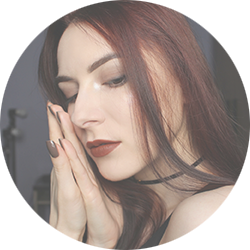







Welcome Back
Sign in to be closer to your community!
Follow other divas, like and comment
on their posts, message them, and see
who loved your posts!
Invalid username or password
You have not verified your account by clicking on the link we sent you via email. Please check your email folders (including your Spam folder) and click on the verify link sent.
Email is required
Password is required








Join FashionPotluck.com
Create your own profile in order to create content, follow other divas and like their posts, use our own messenger, and be a part of a growing international women community!
WELCOME TO OUR COMMUNITY
Fashion Potluck -
the first social media
platform for women.
You are free to read/watch & create content,
express your true self, and interact with others.
Join for free
Already a member? Log in here.
Purchase Alert
Dear Queen, you can only buy from one seller at the time. Please finish this purchase first in order to buy from another FP member
Comments
Please select one platform to continue
Please select one platform to continue
Please select one platform to continue
Please select one platform to continue
Please select one platform to continue
Please select one platform to continue
Please select one platform to continue
Please select one platform to continue
EDITOR APPROVED
You are wondering what is this 'Editor Approved'?
Well, this is pretty awesome! In order for the post to qualify and receive this accolade, it has to have a minimum of 700 words and two images (at least one original).
Receiving this accolade means two things: 1) Your content is amazing! Good job! 2) Your content qualifies for our monetization program. Every week two of the most read posts receive monetary rewards.
Have the badge & want to monetize your content?

TUTORIALS


Whether you aspire to be a better photographer to satisfy your personal aesthetic needs or you want to improve your skills because it will help you represent your business in a more appealing way, one thing is indubitable. Composition is the way to go.
Think of all the elements combined that make up a good or a bad photo. That’s composition. In the first part of Fashion Potluck’s Photography Series we talked about the technical aspects that we need to understand in order to make the most of our DSLR cameras. We analyzed exposure and the ways to control it and we mastered the shooting modes of our camera.
And since we got that out of the way, we can now get creative and unleash our artistic side by purposefully arranging elements within our frames, picking the right angles and learn the rules, in order to be able to break them to create some unconventional magic.
Some people are born with an inherited talent to an exquisite artistic vision. They just know what works and what not. But even if you are not one of those people, the ability to understand the elements that work and would make up a great picture can be learned and there should be nothing holding you back from achieving visual greatness!
There are several composition techniques that you can comprehend and use when you are out and about, taking pictures. We’ll focus on the most versatile ones, simple, established rules that would work with pretty much everything. The main goal is for you to get to the point where you get the artistic epiphany. You start with the guidelines and then you simply stop thinking about it as you automatically know what to do, to enhance the impact of your photos.

RULE OF THIRDS
The predominantly mainstream rule. The ‘basic bitch’ of the photography world. But before you say “I’m sorry I do not speak basic”, listen: It works. You can then add or remove elements to make it as unbasic as you want, but the rule works as hard as Melanie Griffith in “Working Girl”. Use it.
Here’s how it’s done:
You break the image down into thirds, so that you end up with nine parts. Like so:

Place your subject –your chosen focal point, along the lines and intersections that you created (we call them power points) to enhance the visual anchor to which the eye is drawn. So basically instead of centering your subject in the middle the photo, move it a bit to the left or right to create balance and interest. Scientifically proven and backed by stats, that is.
Let me visualize it for you:


NEGATIVE & POSITIVE SPACE
Art, architecture, music and design: The principle remains the same. Positive is the space occupied by your subject. Negative space is the area that surrounds the main subject and it can be as impactful as the subject itself. It’s a wonderful paradox: When the negative space takes up more of the image than the positive space, it ends up amplifying the subject while creating drama.


Use that to add feelings of loneliness, solitude, relaxation, contemplation, or even importance to an image. And this is how a picture speaks a thousand feelings.
RULE OF ODDS
At first it may sound odd but the numbers speak for themselves. If you are going to photograph more than one subject, use an odd number.

Three flowers instead of one. Five green bottles standing on the wall.
For some reason it’s visually appealing as it creates the illusion of harmony.
LEADING LINES
The easiest way to create a path for the eye. Give it a bunch of lines and the eye will always follow. Think of natural occurring lines like trees or intentionally placed elements, like a fence or the very cliché railway to understand the concept.

Use this technique to focus the viewer's attention on the main subject or to draw a connection between two objects. They're also an excellent means of creating depth and symmetry.
SYMMETRY
That’s a controversial one and despite my inner OCD voice telling me to stop, I suggest that this rule is the first one to break intentionally and see what happens. But before we start breaking stuff let’s understand the rule and how it works. You can relax inner OCD voice, we are not doing anything bad. Yet.
Symmetrical balance in a photograph is achieved by arranging elements on either side of the center of a composition in an equally weighted manner. We call it the 50-50 balance or the Mirror Image Technique. I like it. It’s very satisfying. Now, let’s see what will happen if we take it to the 40-60 balance ;)

ASYMMETRY
Asymmetrical balance, or informal balance as we like to call it to sound like we know stuff, is when we get a bit arrogant with our photography skills (nothing wrong with that, hey you earned it) and use the tone, size and form of subjects to create balance through asymmetrical elements that complement each other. Think of light and darkness, contrast or bright versus muted colors.
These basic principles will get you off to a good start. Remember that rules are meant to be broken but you have to know them to break them. Your instinct is a good indicator too and if a certain style or subject excites you don’t ignore the feeling. Practice a lot to see what works for you and how you can take those techniques and add your own personal touch. After all, personality and innovation is way more important than blindly following guidelines! Make it yours!
Until the next one,
-
 Katie W :
Great stuff! I forgot all about the rule of 3 and I love the harmony tips of odd numbers! Glad I found this!
Katie W :
Great stuff! I forgot all about the rule of 3 and I love the harmony tips of odd numbers! Glad I found this!
-
 Chelf D :
Hi Katie! Glad you liked this one! Stay tuned for more!
Chelf D :
Hi Katie! Glad you liked this one! Stay tuned for more!
Comments
Related Posts
More Posts
- What Makes Men’s Accessories Worth Investing In Today? by Ekim Fashion 0
- How to Plan Seasonal Plush Inventory Without Overbuying by Harnel Inc 0
- 6 Winter Season Reasons to See a Dermatologist ASAP by Monica Quinn 0
Vote content out
Reason for voting this content out?
Reason for voting this content out?


 Login with Google
Login with Google Login with Twitter
Login with Twitter






Add Comments